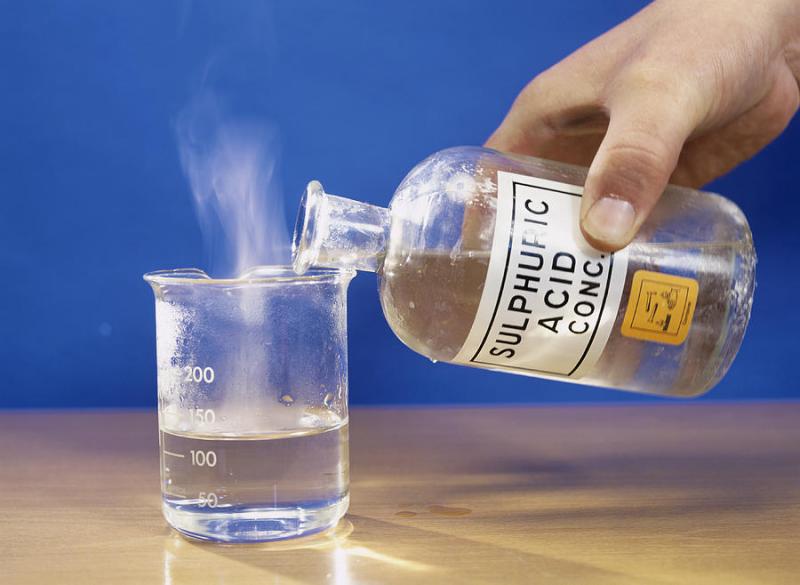Sulfuric Acid Production, Chemical Properties, Industrial Applications, and Safety Considerations
Chemical Properties
Sulfuric acid has the chemical formula H2SO4. It is a colorless, odorless and oily liquid that is heavier than water. When concentrated, it is highly corrosive and can cause severe burns upon contact with skin or eyes. Some key chemical properties of sulfuric acid include:
- Highly polar and reactive nature which makes it a strong acid.
- Strong dehydrating property causes it to rapidly absorb moisture from air.
- Miscible with water in all proportions giving an exothermic reaction.
- Dense, viscous liquid with a melting point of 10 degree Celsius and boiling point of 338 degree Celsius.
Production Methods
There are two major industrial methods used for large scale production of sulfuric acid:
Contact Process
- The contact process is the dominant method and accounts for over 90% of sulfuric acid production worldwide.
- In this process, molten sulfur is burned in air to produce sulfur dioxide gas which is then converted to sulfur trioxide in the presence of a vanadium pentoxide catalyst.
- Sulfur trioxide gas is then absorbed in concentrated sulfuric acid to produce oleum (H2S2O7) which on further dilution gives 98% concentrated sulfuric acid.
Wet Sulfuric Acid Process
- In this older process, Sulfuric Acid sulfur is burned in air to form sulfur dioxide gas which is then oxidized to sulfur trioxide in the presence of water vapor.
- The sulfur trioxide gas further reacts with extra water to directly produce concentrated sulfuric acid in a single step.
- However, this process requires more energy and produces higher emissions compared to the contact process.
Major Uses
Given below are some of the most important industrial applications of sulfuric acid:
Fertilizer Manufacturing
- Sulfuric acid is used as a catalyst in the production of ammonium sulfate and superphosphate fertilizers by reacting ammonia and phosphoric acid respectively.
- It helps solubilize phosphate rock leading to increased fertilizer production. Fertilizer manufacturing is the largest end use for sulfuric acid.
Oil Refining
- Sulfuric acid is employed as a catalyst in the alkylation process which is used to produce high-octane gasoline by reacting isobutane with butenes.
- It is also used to purify gasoline by removing corrosive contaminants such as nitrogen and sulfur compounds.
Metal Processing
- Sulfuric acid is used for pickling or surface cleaning of steel and other metals before their further processing or coating.
- It dissolves oxide films and other surface contaminants from metals.
- It is also used in the manufacturing of steel, copper, aluminum and various alloys.
Other Applications
- In chemical synthesis, sulfuric acid serves as a reagent and catalyst in manufacturing a variety of chemicals including dyes, drugs, detergents, explosives and various inorganic salts.
- Used as an electrolyte in lead-acid batteries and drain cleaners owing to its strong acidic nature.
- Important industrial applications also include production of pulp & paper, hydrofluoric acid, mineral processing and wastewater treatment
Get more insights on Sulfuric Acid
